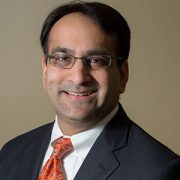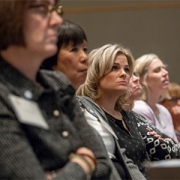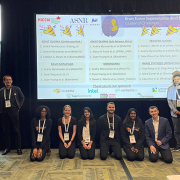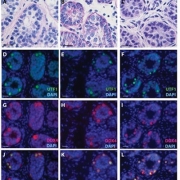A big transformation starting with small changes from within

“It was novel and exciting to see managers, chiefs, and even front-line staff identify potential ‘projects’ that could potentially fall under this work,” said . Rahul Shah, M.D., Vice President and Chief Quality & Safety Officer. “The change, as the executive leadership hoped, was organic and recognized a true cultural shift.”
Like many health care systems, Children’s National realizes that in order to provide top care to patients, the hospital and health system have to constantly evolve. In 2013, across the country, the importance of a strong safety and quality program were growing and the organization’s executive leadership made it a key priority to deliver the best care and follow best practices to ensure that we were driving value in healthcare. Children’s National embarked on a long-term journey, known as Transformation 2018, that would ultimately prove successful in improving quality of care while reducing costs across the hospital system.
When starting this initiative, the leaders at Children’s realized that in order to successfully transition from volume-based to value-based care, the change had to occur organically – in other words, led by our own internal teams. Continuously striving to be on the forefront of quality and safety innovation, Children’s National has always valued a culture that empowers staff at all levels to be part of transformations, and this initiative was no different. Rahul Shah, M.D., Vice President and Chief Quality & Safety Officer, and Linda Talley, R.N., Vice President and Chief Nursing Officer, would lead the effort.
Rather than setting their sights on first targeting populations of patients, as is common practice, the team aimed to make an impact at a more micro level by focusing on particular diseases or diagnoses. This strategy allowed the initiative to start on a small scale and involve staff in numerous divisions across the health system, which would eventually pave the way for bolder and broader population health initiatives.
By integrating changes through individual initiatives, Children’s National achieved a combination of quality and cost savings in a number of disease areas, including autism, testicular torsion, idiopathic posterior spinal fusion and sickle cell disease vaso-occlusive crisis.
As the benefits of this effort were realized, leaders throughout the hospital approached the transformation team to see how they too could be a part of the project to transition their divisions.
“It was novel and exciting to see managers, chiefs, and even front-line staff identify potential ‘projects’ that could potentially fall under this work,” said Dr. Shah. “The change, as the executive leadership hoped, was organic and recognized a true cultural shift.”











